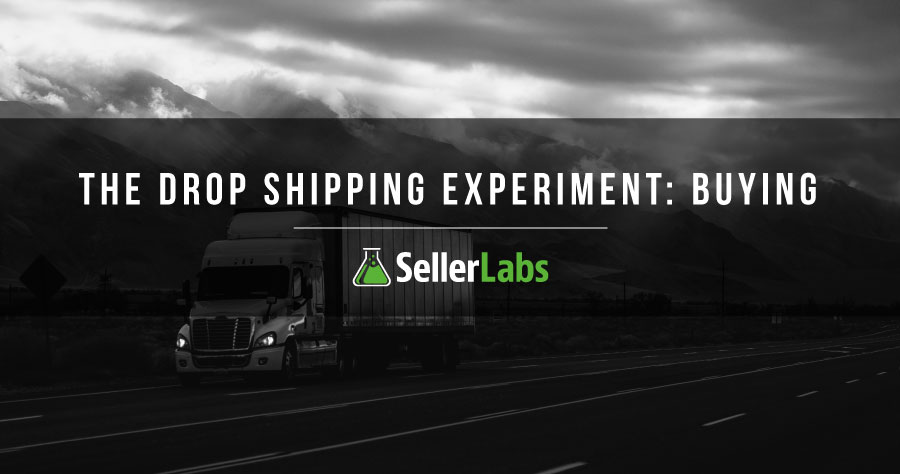The Drop Shipping Experiment: Buying from eBay

Selling online means opportunity for sellers everywhere. Whether it’s Amazon, eBay or somewhere in between, sellers are squeezing profits out of products with a variety of tactics. Sellers range from multinational brands, private label, resellers, arbitrageurs and drop shippers. A recent story on NPR about Internet middlemen shed some light on the selling practice known as drop shipping. The story focused on how drop shipping affects brand owners—for better or worse. This story piqued my curiosity, so I decided to research drop shipping for myself. I wanted to understand how drop shipping worked if it was good, bad or neutral for brand owners.
Background
In the NPR story, Fred Ruckel is introduced as the inventor of the Ripple Rug, a wavy rug with holes cut in it for cats to explore and play in. The Ripple Rug’s inspiration happened while Fred was watching his cat Yoda play with a rug. This “a-ha” moment turned out to be a best-selling cat toy on Amazon. At the peak of sales on the Amazon Marketplace, the Ripple Rug was selling for $39.99, making more than $60,000 a month. But then Fred saw that people were selling his product on eBay for $59.99. These sellers were drop shippers who would copy his Amazon listing and post it to eBay for a markup.
The idea behind drop shipping is that most people prefer shopping on one site over another and most of them don’t really care where their goods come from anyway. With this knowledge, drop shippers are able to copy an Amazon listing to eBay. They fulfill the eBay orders through Amazon and the shopper gets what they want.
Sounds like a win-win for both parties, right? Well, not exactly. Fred had more than 200 returns on Amazon in two months resulting in more than $10,000 in losses. But why? Shoppers would receive their Ripple Rugs—purchased on eBay—in an Amazon box. This piqued their curiosity which led them to research the product on Amazon. Ultimately they realized they could get the same product for $20 less on Amazon so they would return their product. But the drop shippers didn’t have to deal with the returns, instead, the burden was placed on Fred who had to pay for the purchasing, shipping, return and restocking fees.
After trying to stop the drop shippers with cease and desist orders, and calling them on the phone, he ultimately decided to pull the Ripple Rug from the Amazon Marketplace. This move came at a heavy cost. His sales went from $60,000 a month to $25,000. He now fulfills his own orders that come in from his site but he has more control of his brand. He has eliminated drop shippers and reduced his returns to just two since quitting Amazon.
But was it all worth it? Do Amazon sellers need to go to these lengths to protect their brands?
An Experiment with Drop Shippers
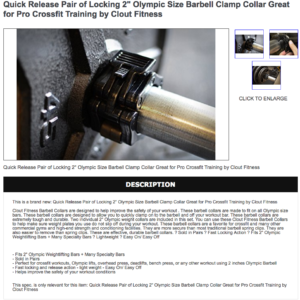
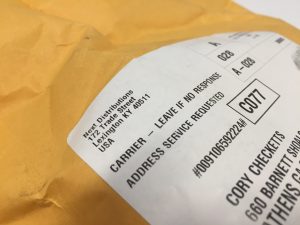
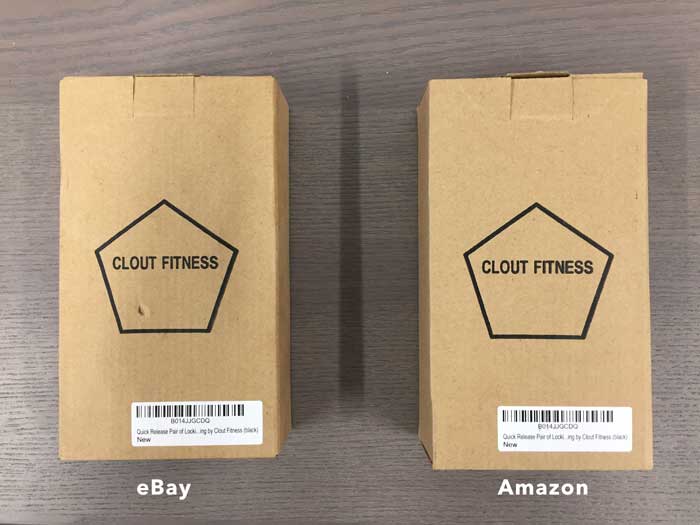
Patrick from the $25k Challenge is in a similar situation. His best-selling barbell collars on Amazon are being sold on eBay by drop shippers. And this isn’t necessarily a bad thing; I’ll explain later. I decided to do an experiment to prove whether or not I could buy his barbell collars on eBay, here’s what I discovered.
I went to eBay and searched for Patrick’s Clout Fitness branded barbell collars in black. I found 28 different sellers offering Clout Fitness Barbell Collars with the same product title as Patrick’s Amazon detail page: “Quick Release Pair of Locking 2” Olympic Size Barbell Clamp Collar Great for Pro… The eBay listings were a complete copy of what was on Amazon. There was almost no inclination that the eBay sellers tried to make their listings unique. A few of them changed the brand name from Clout Fitness to Pro Fitness. Every listing with the name Clout Fitness used images from Patrick’s Amazon listing. After sifting through the eBay listings, I was confident what I was ordering was actually Patrick’s product. The price for the collars on Amazon was $9.88 and $11.73 on eBay.
I purchased my set of Clout Fitness Barbell Collars in Black from the top listing on Monday, September 26 at 4:31 p.m. EDT. I received a shipping notification from eBay Tuesday, September 27 at 2:37 a.m.; the estimated delivery for my package was Friday, September 30. The next day I looked up the tracking number and noticed it was coming from Kenosha, Wisconsin. My package arrived Wednesday, September 28 in the afternoon—two days earlier than expected.
The collars came in a large bubble envelope but the label didn’t say it came from Kenosha, Wisconsin. The package was from Next Distributions, 172 Trade Street Lexington, Kentucky 40511, USA. Two things stuck out to me: 1. Next Distributions is the name of Patrick’s Amazon store, and 2. The shipper’s address is an Amazon Fulfillment Center. I looked up the tracking number again but on USPS’s website this time. It told me the item came from Amazon. I was 100% certain that the collars were from Amazon and not a 3PL company.
I compared the packaging to one I had purchased from Amazon, they were identical. There was no doubt that this seller was drop shipping Patrick’s products. Patrick and I got together and dug through his sales information and found my order. What we discovered was that the seller—whose name is Deborah by the way—purchased my eBay order on Amazon at 6:09 p.m. EDT on Monday, September 26, about an hour and a half after my purchase. Amazon shipped my collars at 9 p.m. that night. We also discovered that she has “purchased” other collars on Amazon to fulfill eBay orders.
What Drop Shipping Means for Amazon Sellers
I said I’d get to this point. Drop shipping isn’t necessarily a bad thing for Amazon sellers. My eBay purchase of Patrick’s barbell collars meant another sale for him. He makes money for doing nothing. Drop shippers are essentially a retail outlet and Patrick/Amazon is the supplier. Drop shippers markup the price and get a little profit. Drop shippers do have some work to do, so it’s not just free money. They have to create the listing, research top-selling Amazon products and do customer support. Which brings me to my next point: What happens if I want to return my product? Who’s responsible for the return, eBay or Amazon?
To find out, I sent in a request to return my product through eBay. It was only after I sent in my request that I noticed something interesting from an eBay email from the transaction. Here’s an excerpt from the eBay seller’s email:
If you have not received it or item is defective/not as described, please contact us via eBay messages and our customer support will take care of your issue ASAP to your satisfaction. Please DON’T open a return request or any other case as our returns process is very fast and easy. We provide prepaid labels in most cases or pay for the return shipping. Opening return requests and cases hurts our business and we will be more than happy to serve you to your satisfaction as your happiness and our reputation are the most important thing for us.
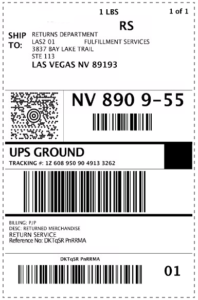
As you can see from the italicized text, the seller clearly does not want me contacting eBay for returns…oops. But this is why I’m doing the experiment, I want to understand how a drop shipper handles returns through eBay. To be honest, I didn’t read this email until after I submitted the return request. I’ve clearly thrown a wrench into their plan.
The next morning I received three emails from eBay about my return request. The first email was an automated reply message from the seller; the second email had a short message with a button to view return details; the third email was from the seller and it contained instructions and printable shipping labels. The labels are clearly Amazon return labels. The address on the label belongs to an Amazon Return Center. I can’t imagine this email was automated but it’s possible.
I printed the labels and stuck them to the envelope the collars came in and sealed off the top with packing tape. I dropped the package off at UPS Friday, September 30 at 5:30 p.m. All together, Patrick will lose $3.20 with the cost of goods sold. Amazon will refund all of the fees associated with selling his product. He is out the cost to purchase the product and ship it into FBA. All things considered, this isn’t a huge loss if it happens occasionally.
My return package was processed at an Amazon return center October 7, 2016 in the afternoon—exactly one week after I dropped it off. Patrick was able to find the refund of my order shortly after for -$10.38, making my eBay refund a grand total of $12.79. Nobody makes any profit with my return—in fact, Patrick loses. But this could happen if someone purchased his collars on Amazon instead of through a drop shipper. To answer my question from above, the Amazon seller is ultimately responsible for the product return since they pay the restocking fees.
Is Drop Shipping Worth the Effort?
Yes. Drop shipping is a great way for Amazon sellers to make even more profit because they can list their products onto multiple marketplaces with minimal effort. Adopting this mindset opens sellers up to increased profits and added control over their brands. If you’re a seller like Fred with his Ripple Rug, you’re not going to like drop shippers. But if you’re more like Patrick who sees this as just another way to expand your brand, then it’s a positive thing.
Now that I understand more about drop shippers, Patrick and I are going to start selling his barbell collars on eBay using a multi-channel or omni shipping method. We’ll do a follow-up post with our findings in the upcoming weeks. We’re hoping the extra $2.91 of markup is worth the time and effort.

Jessica Wright is the in-house "Amazon Genius" for the Seller Labs Managed Services team. Her focus is working with our team members and clients to educate and answer tough Amazon questions in areas outside of PPC advertising. With 15 years of manufacturing and eCommerce experience on both the brand and agency sides of the business, Jessica is knowledgeable in all things Amazon and is constantly seeking out the latest updates to help Seller Labs clients stay ahead.

